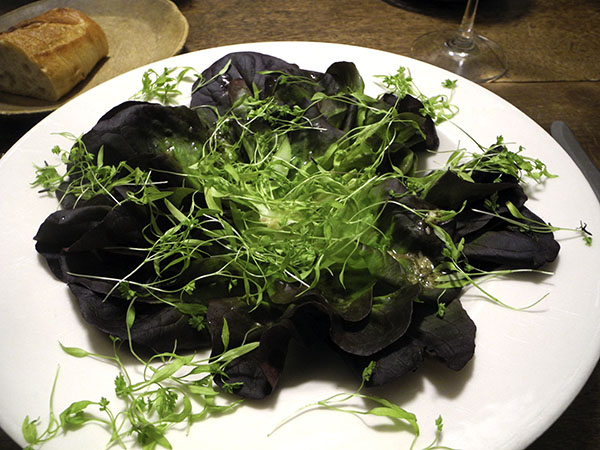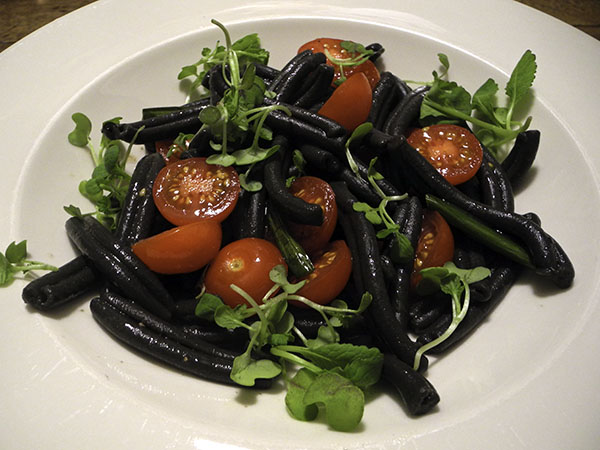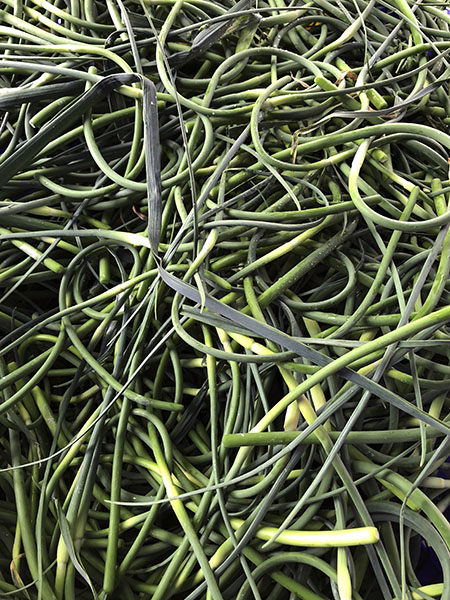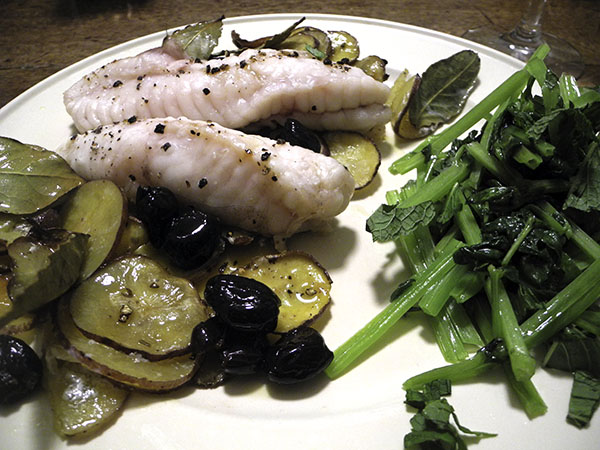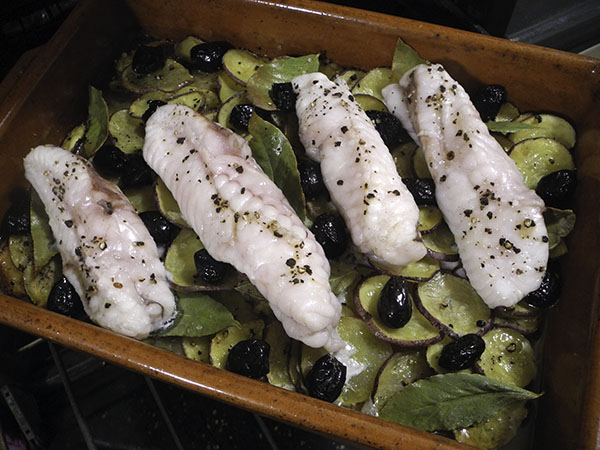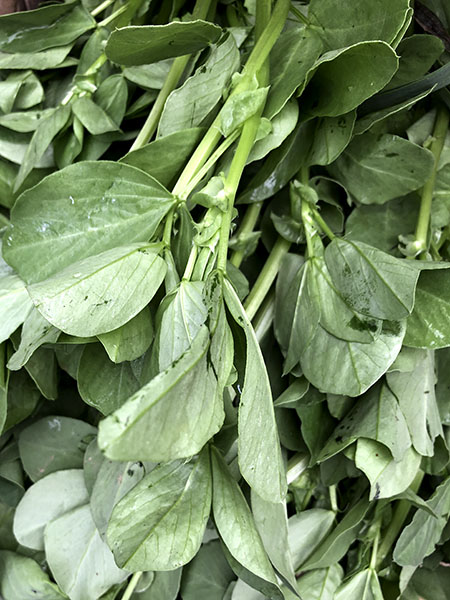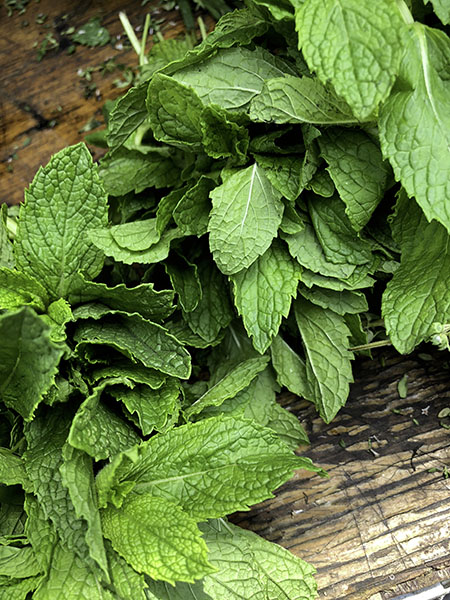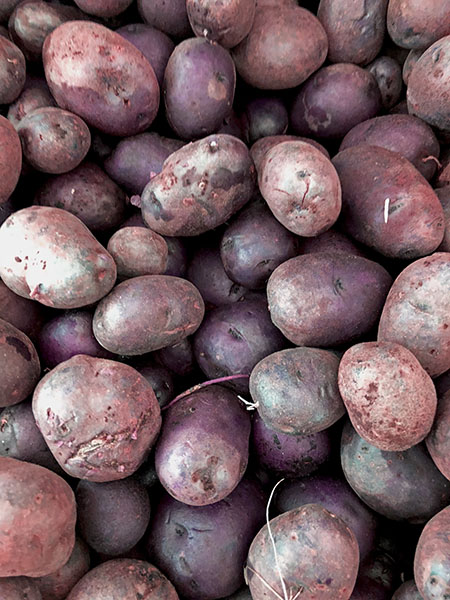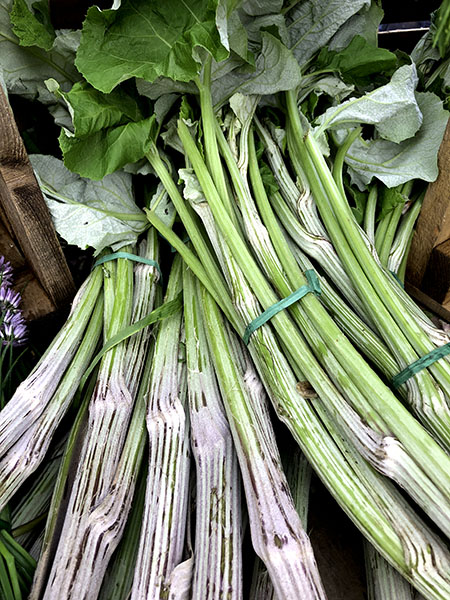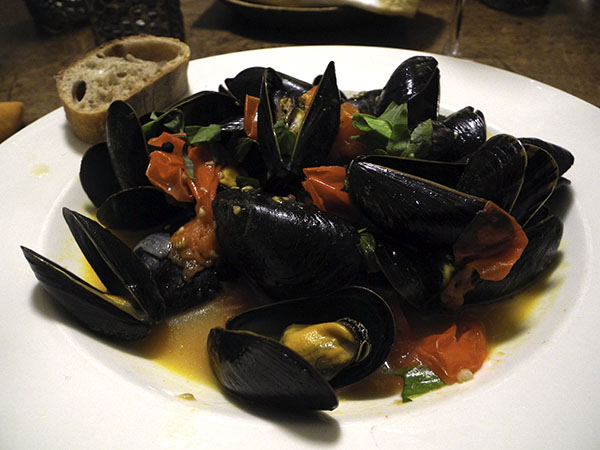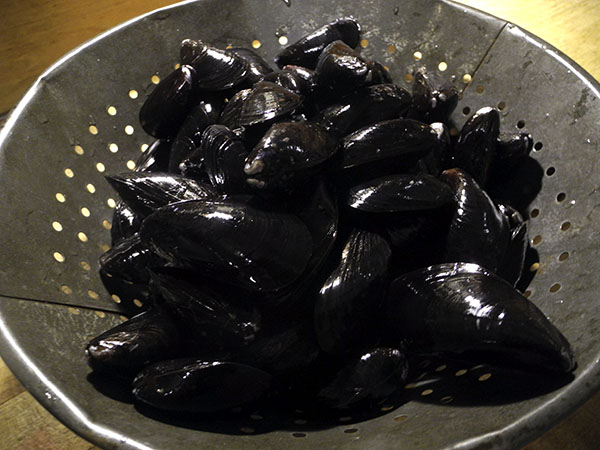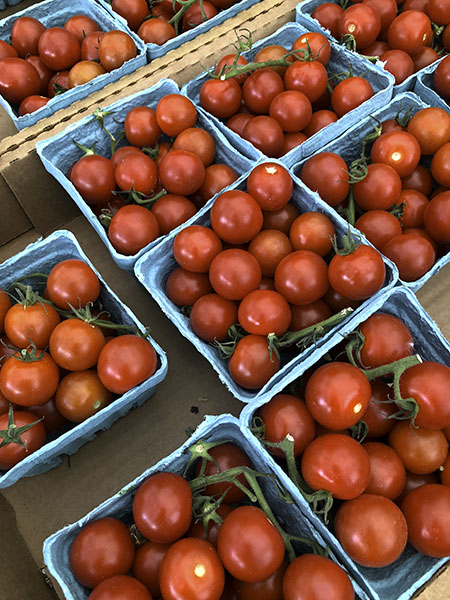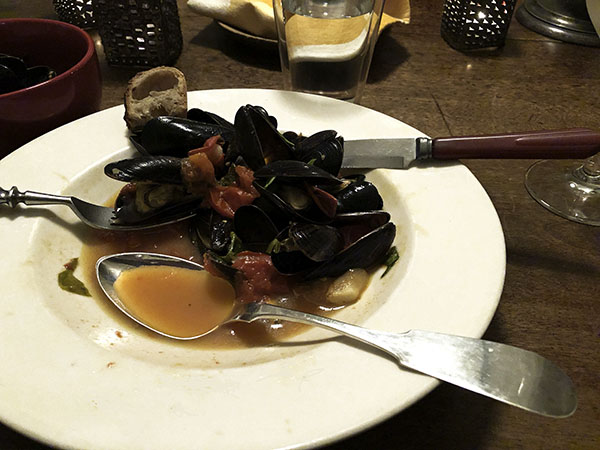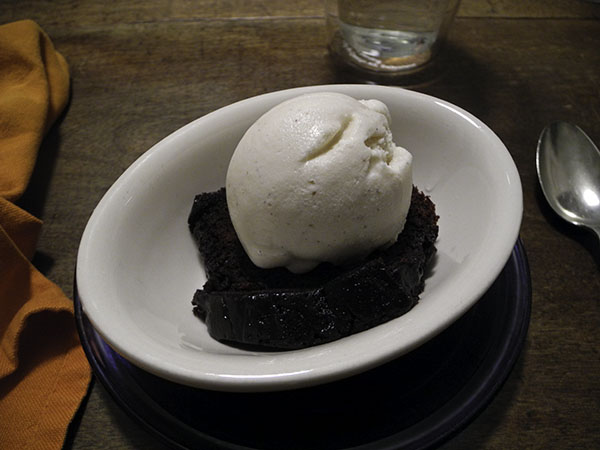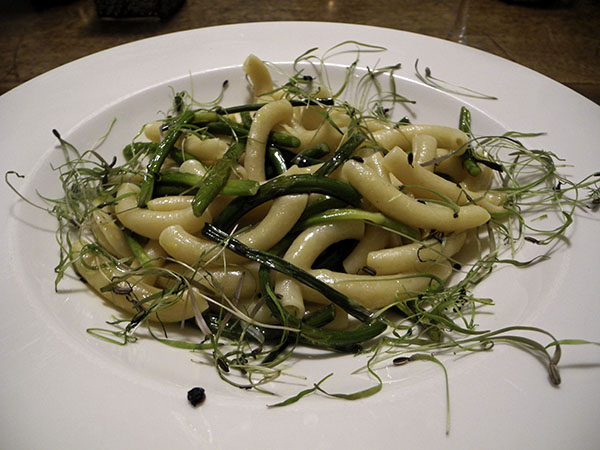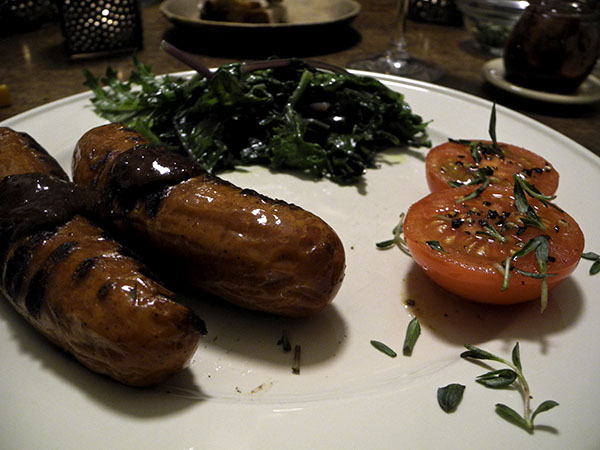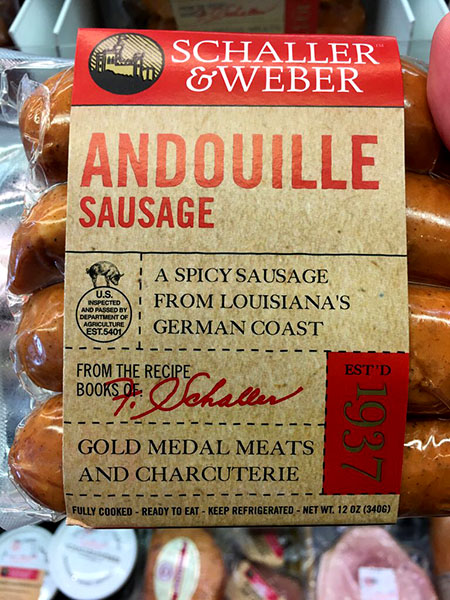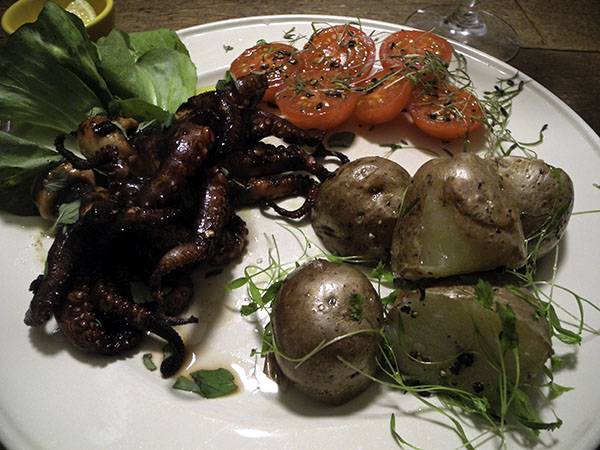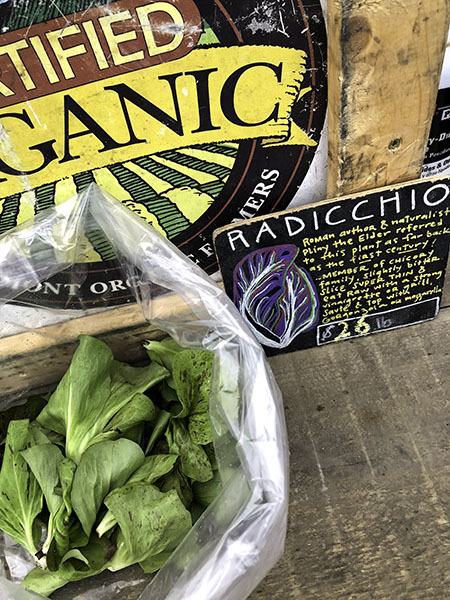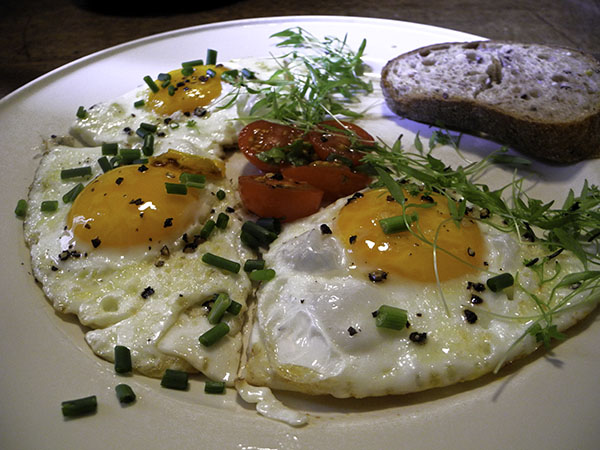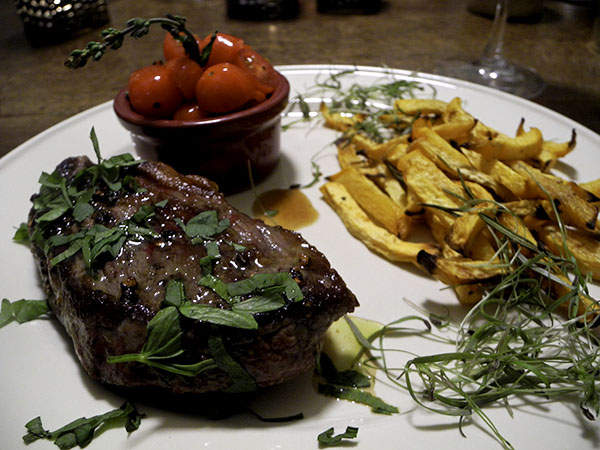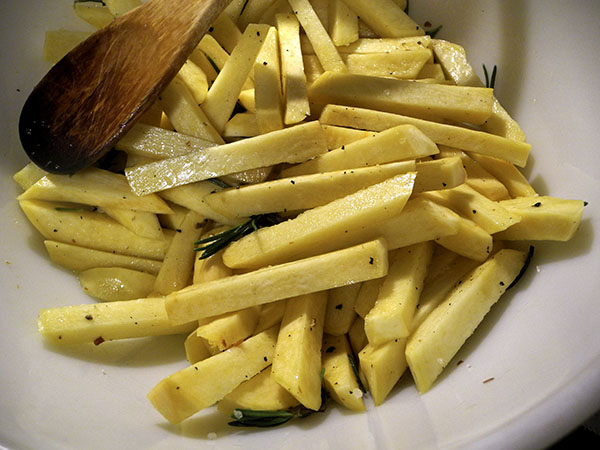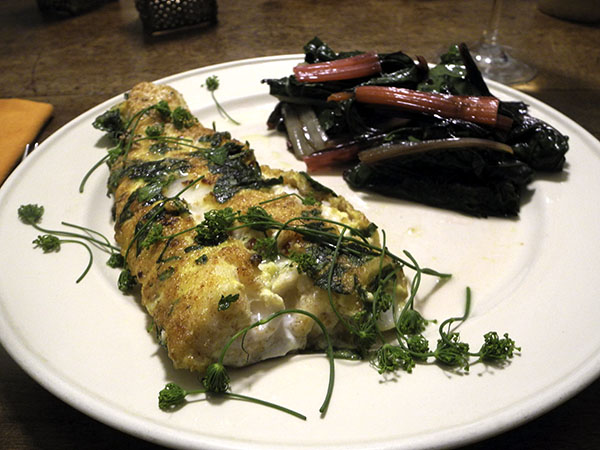
It had been 2 months since we’d had cod, and almost 2 years since I’d prepared it on top of the stove, which was my choice on this hot day in June.
This dinner was absolutely delicious. The filet was cooked à point, and you can see the pools of its juices inside the crevices. The chard was also cooked to just the right moment, although that’s always much less of a challenge. Everything was super fresh, and neither the fish nor the vegetable recipe asked for much of a fuss, so it was actually pretty easy to get everything right.
- *a very fresh 18-ounce cod fillet from Pura Vida Seafood, divided into 2 portions, which was intended to also make it easier to turn over while cooking (actually, I cut the filet into 2 lengthwise sections this time, which would seem counterintuitive, but they survived intact, and they looked great on the plates), dredged lightly in a seasoned, coarse, stone-ground local flour, from the Blew family of Oak Grove Mills Mills, that I had purchased in the Union Square Greenmarket, then dipped into a mixture of one beaten Americauna chicken egg from Millport Dairy Farm and half of a cup of chopped parsley from John D. Maderna Farms that had been picked the day before, sautéed in a heavy oval vintage copper pan over medium-high heat in a mix of olive oil and butter (one tablespoon of each), turning once, for a total of about 7 or 8 minutes, garnished with some special, very fragrant dill flowers from Windfall Farms, and drizzled with a little juice from a Whole Foods organic lemon
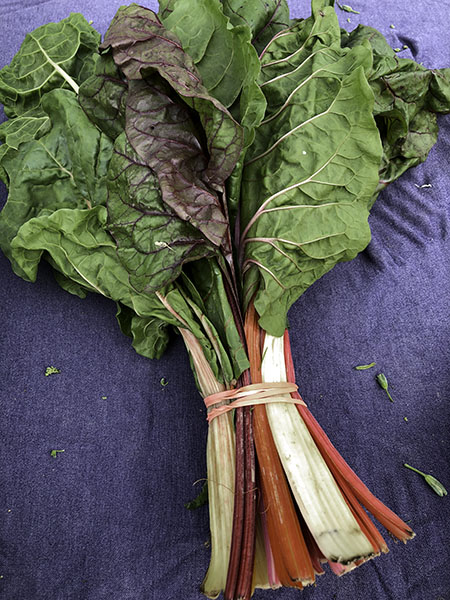
- *the last bunch of rainbow chard on the table at the Greenmarket stand of Alewife Farm today, wilted inside a a large antique high-sided copper pot in a couple tablespoons of Portuguese olive oil, a house brand of Whole Foods Market, in which a sliced section of a spring garlic stem from Berried Treasures had first been heated and softened slightly, seasoned with sea salt and freshly-ground black pepper, finished with a little lemon juice and a drizzle of olive oil
- the wine was a Portuguese (Alentejo) white, Esporao Alandra Branco 2016, from Garnet Wines
- the music was Marc-Antoine Charpentier’s 1688 opera ‘David et Jonathas’, in a performance by Pinchgut Opera
